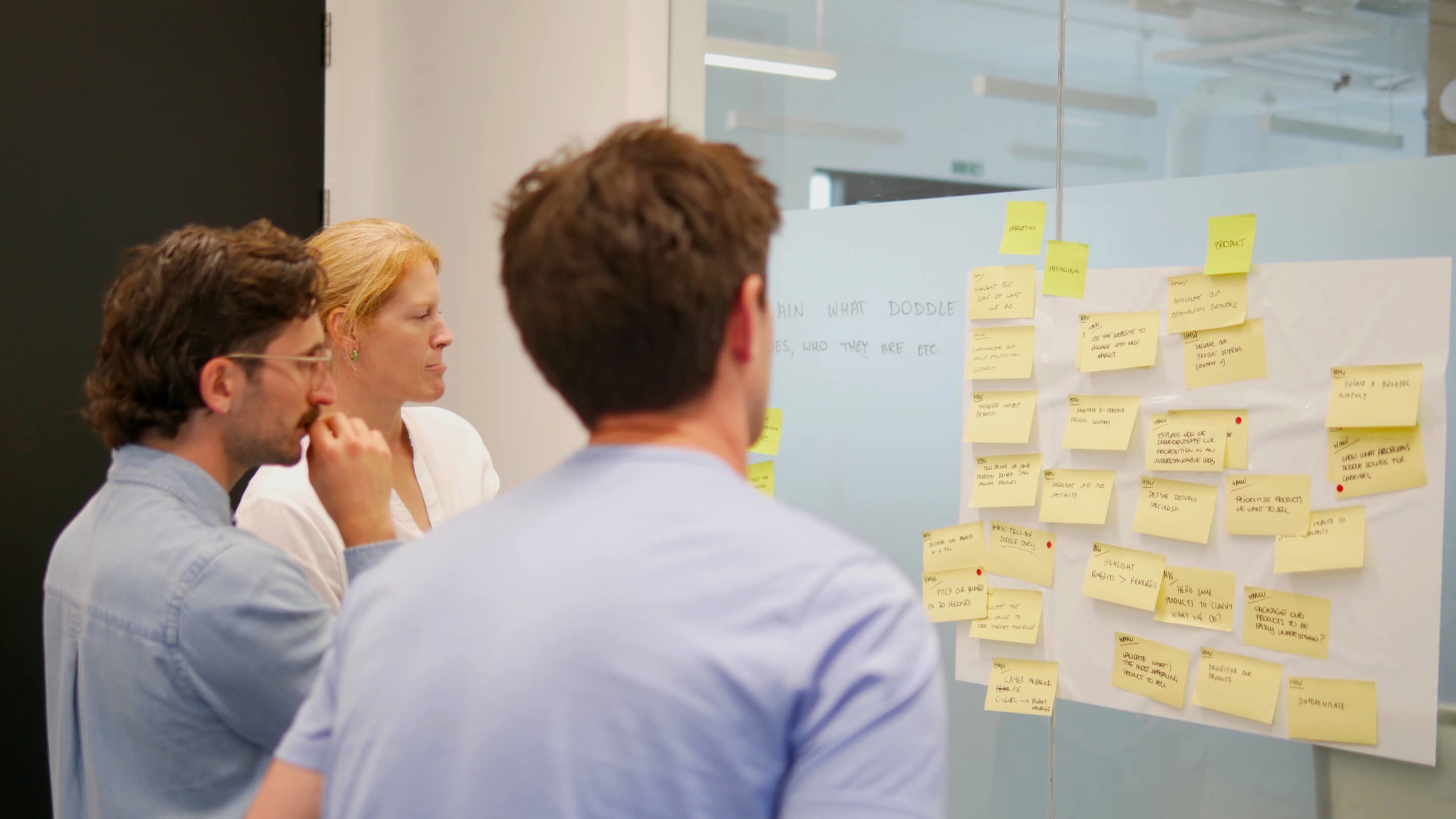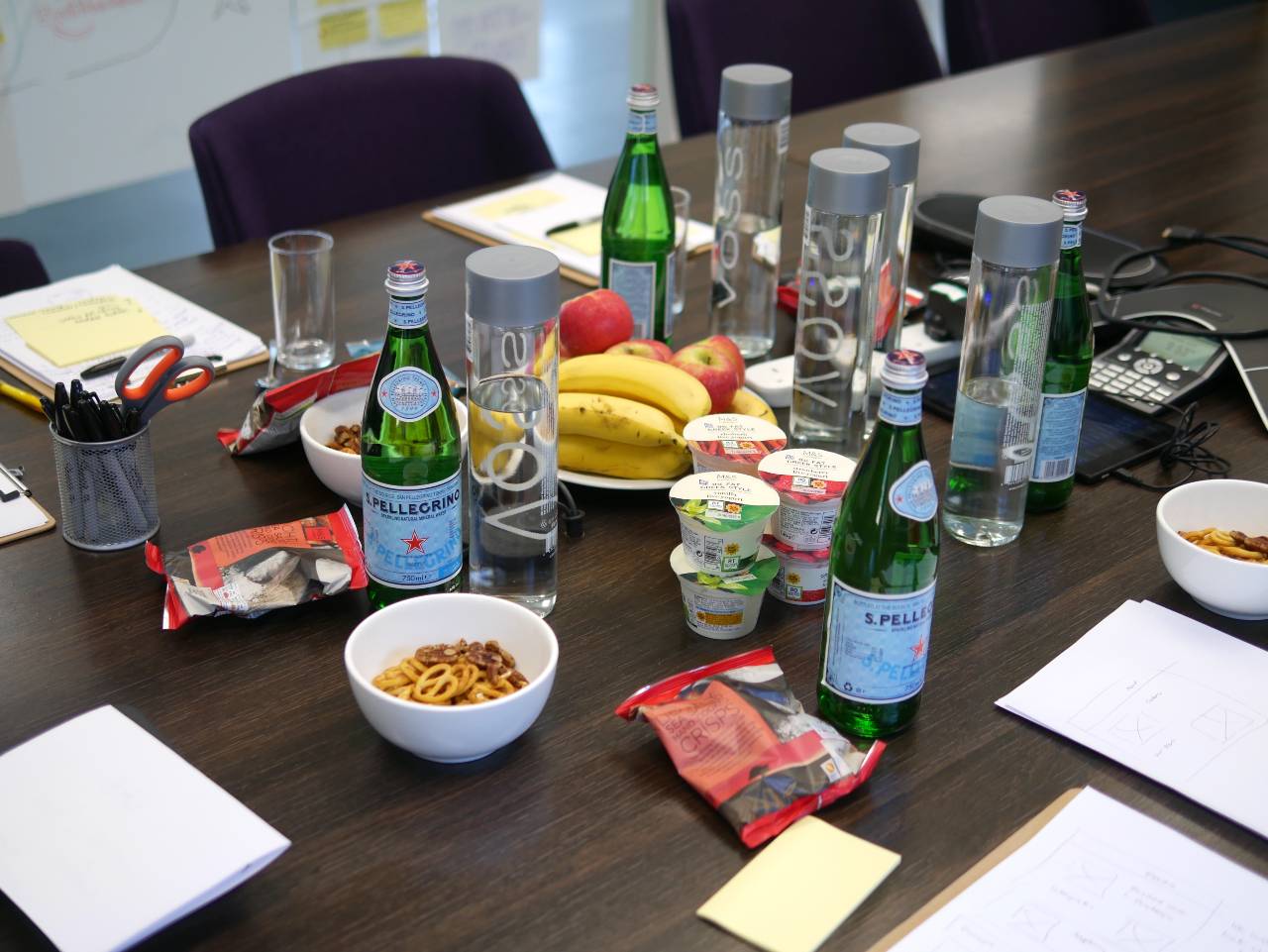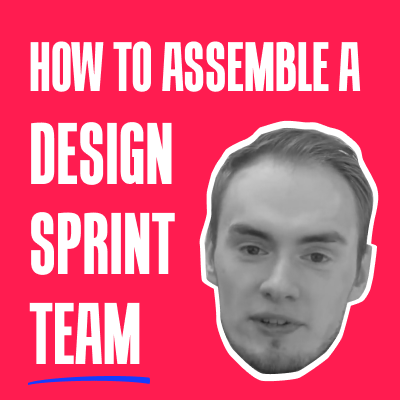The Design Sprint is a new process for most people. It’s not immediately obvious how important are some of its aspects. This can easily spiral out of control, as one person’s assumption can have a knock-on effect on the entire group and the outcome. A skilled facilitator will alleviate most of these concerns, but it’s useful for every participant to know what “danger” is around the corner.
Solving problems in a meeting is a bit of a myth. They drag on; the group gets overpowered by the loudest voices, and it usually ends with an email and an invitation to a follow-up meeting. What if I told you there’s an infinitely better way to do that? It takes just an hour, you can do it remotely and applies to any kind of problem.
An innovation framework calls for an innovative approach to dining. When we facilitate Design Sprints, our choice of food and snacks is scientific. Even though we don’t bring heaps of chocolate, it’s still delicious and fun. And, in the end, there is some chocolate. 😉
The design sprint is an excellent innovation framework that brings the best out of the members of your team. But before diving deep into the exercises, the facilitators have an important job – to help you assemble the right design sprint team. Here’s are the key design sprint roles and tips on how to prepare a shortlist of participants from your company.





